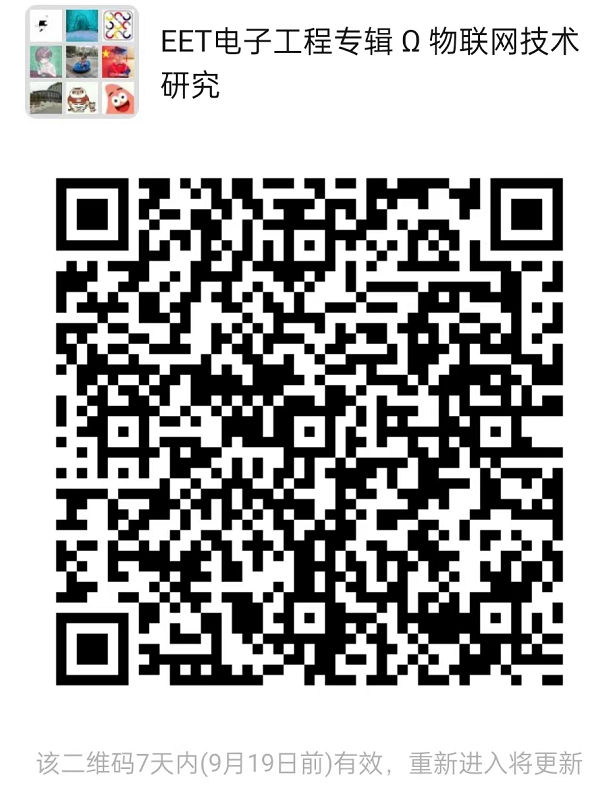Every era has its unique electronic products, and each type of product has its own compatible operating system. For instance, early multitasking operating systems like MULTICS and UNIX, the multi-processor operating systems used in personal computers like LINUX and Windows, and the mobile operating systems of the smartphone era such as iOS and Android.
These operating systems run at the lowest level of “bare metal” devices, building the environment and platform for other software and applications (APP) to operate. The boom of various software and internet applications today, as well as the glory of the PC and mobile internet era, cannot be separated from the continuous improvement of operating systems.
In recent years, with the rapid development of the Internet of Things (IoT) market, the networking of embedded devices has become a necessity. The core and foundation of the Internet of Things is still the internet, but unlike the internet which emphasizes the interconnection between people, the Internet of Things extends and expands the connection network between people and things, and between things and things, forming what we call “the interconnection of all things”.
Although the development of the Internet of Things is a trend and is widely regarded and focused on, the networking of embedded devices will significantly increase software complexity. The traditional embedded RTOS (Real-Time Operating System) kernels have increasingly struggled to meet market demands. In this context, the concept of IoT operating systems (IoT OS) has emerged.
Scan the QR code below to join the IoT technology group
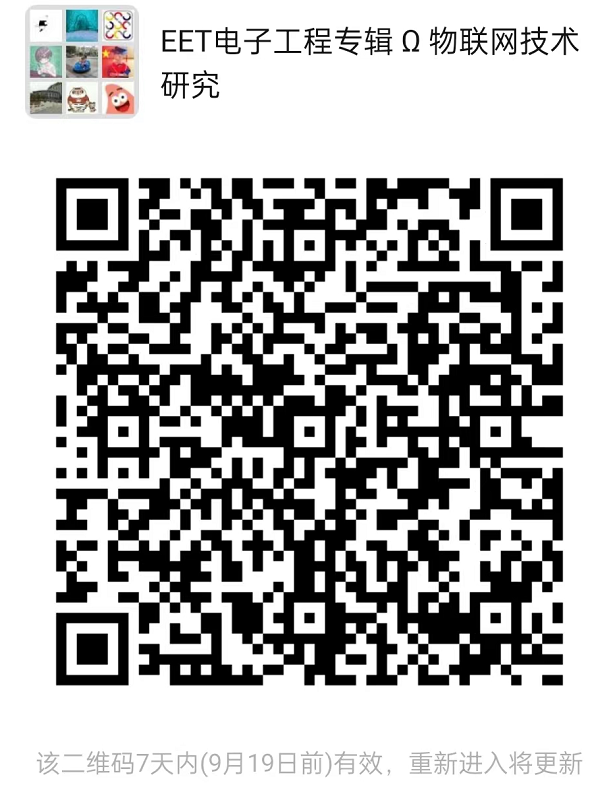
Requirements of IoT on Operating Systems
IoT systems can be roughly divided into several layers: perception layer, terminal system layer, network layer (further divided into network access layer and core layer), device management layer, and backend application layer. Due to the large number of embedded devices, the Internet of Things faces fragmentation challenges compared to traditional single devices. Both the underlying connections and the upper-layer application services emphasize “specialization”:
-
The IoT system requires the devices at the perception layer to be smaller, consume less power, and need to be secure, reliable, and capable of networking;
-
The IoT communication layer needs to support various communication protocols and conversions between protocols;
-
The application layer needs to have cloud computing capabilities.
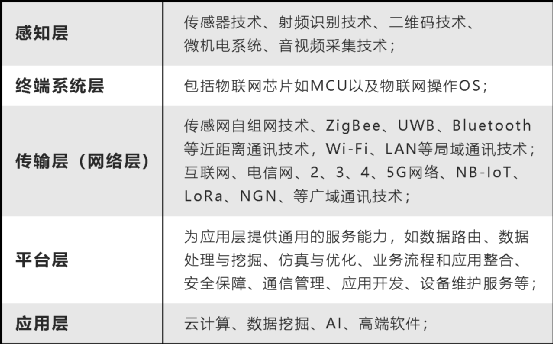
In terms of software, the early embedded operating systems only completed the abstraction of physical hardware and did not truly represent the future of the Internet of Things. For example, in the Android ecosystem, developers basically do not need to consider the physical hardware configuration of intelligent terminals; they can write applications according to the programming interfaces of Android, which can run on all Android-based intelligent terminals.
In simple terms, this is the difference between the “operating system for IoT devices” and the “IoT operating system”. The device operating system addresses the issue of how devices connect to the network and how to connect more conveniently, but it does not solve the problems of what to do after connecting and how to do it. For the entire IoT system, the latter is more important.
To support IoT systems, software needs to be more complex than traditional embedded devices, not simply limited to “edge-side operating systems”, but must involve multiple levels such as chip level, terminal level, edge level, and cloud level. By distributing and issuing commands layer by layer, and scheduling computing resources of different devices at different levels such as cloud, edge, and terminal, the goal of scheduling the “objects” themselves can be achieved. These requirements have given rise to dedicated operating systems for IoT devices and applications.
Characteristics of IoT Operating Systems
IoT operating systems have the following characteristics in the field of IoT applications:
1. Scalability of Kernel Size and Architecture
The development of the Internet of Things is about to enter a small explosion period, so the flexibility and scalability of the overall architecture can be said to determine the commercial lifeline of an enterprise in the face of waves of technological innovation or even replacement. At the same time, the scalability of kernel size is also a problem that needs to be addressed to meet the technical requirements in different application scenarios.
2. Real-time Nature of the Kernel
For non-preemptive scheduling kernels, it is difficult to meet the real-time requirements of critical actions, such as common interrupt response and multi-task scheduling. Thus, the real-time nature of the operating system has higher requirements, especially for most IoT applications, where meaningful response time determines market acceptance.
3. Security and Reliability
In the application environment of the Internet of Things, facing massive nodes, once a device is put into use, it is very difficult to maintain. Therefore, the average fault-free operation time and performance in some harsh environments become particularly important. In institutions that place a high emphasis on information security, the data security has sparked widespread discussion in the industry regarding open-source mechanisms, VMM mechanisms, etc.
4. Low Power Consumption
Due to the increase in application scenarios and the number of network nodes in the Internet of Things, low power consumption is a very critical indicator. Therefore, during the overall architectural design, some logic judgments such as sleep mode, energy-saving mode, and frequency reduction mode need to be incorporated to extend endurance.
Overview of Mainstream IoT Operating Systems
The first operating system developed specifically for IoT characteristics appeared in 2010, known as RIOT (Real-time Operating System). Subsequently, in 2014, Wind River (acquired by Intel) announced the VxWorks 7 IoT operating system at the Embedded World Conference in Nuremberg, Germany. In the same year, Arm launched the IoT device platform and operating system Mbed OS. Later, Microsoft released the Windows 10 IoT Core operating system based on Windows 10.
The earliest company to release an IoT operating system in China was Shanghai Qingke, which launched MiCO three months earlier than Arm. After failing to establish a mobile operating system, Alibaba’s Yun OS also began to shift towards IoT. In 2015, Huawei launched the open-source IoT OS LiteOS, and after the US sanctions, the Harmony OS (Hongmeng OS), which includes the software code of LiteOS, became Huawei’s underlying operating system for smart devices.
Currently, IoT operating systems can be mainly divided into two categories: those derived from traditional embedded RTOS, with typical representatives including FreeRTOS, LiteOS, RT-Thread, and Arm Mbed OS; and those extended from internet companies’ cloud platforms, customized based on traditional operating systems, with typical representatives including Ali OS Things, TencentOS tiny, and Win10 IOT.
The advantage of the RTOS camp is that it is widely supported on IoT terminals, with low hardware promotion costs. The disadvantage is that software development requires high expertise, and the separation of software and hardware development is difficult, posing challenges for professional software companies entering this field.
The advantage of the internet platform camp is that it naturally integrates with internet services, facilitating the connection of internet applications. The disadvantage is that it is essentially a product of each company’s services, making it difficult to achieve platform neutrality, thus limiting functionality for software developers.
This article reviews the currently active IoT operating systems according to foreign and domestic camps. Those less popular, briefly appearing, or no longer updated operating systems are not discussed in this article.
Foreign
Wind River – VxWorks

The VxWorks operating system is an embedded RTOS designed and developed by Wind River since 1983, and is a key component of the Tornado embedded development environment. With good sustainability, high-performance kernel, and user-friendly development environment, it has gradually occupied a place in the embedded real-time operating system field.
VxWorks supports almost all modern embedded CPUs on the market, including x86 series, MIPS, LoongISA, PowerPC, Freescale ColdFire, Intel i960, SPARC, SH-4, Arm, StrongARM, and xScale CPUs. Other features include a customizable microkernel architecture, efficient task management, flexible inter-task communication, microsecond-level interrupt handling, support for POSIX 1003.1b real-time extension standards, and support for various physical media and a complete TCP/IP network protocol.
However, it is expensive. Since both the operating system and development environment are proprietary, the prices are generally high, usually requiring more than 100,000 RMB to establish a usable development environment, and additional royalties are charged for each application. Generally, source code is not provided, only binary code. As they are proprietary operating systems, specialized technical personnel are required to master development techniques and maintenance, leading to high software development and maintenance costs. The number of supported hardware is limited.
Canonical – Ubuntu Core
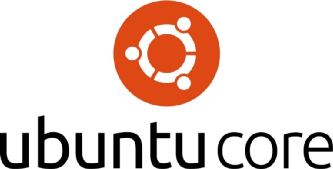
Ubuntu is a Linux distribution primarily for desktop applications, popular among users, and the Ubuntu Core, launched in November 2016 specifically for IoT, has also become popular. Ubuntu Core is a lightweight operating system designed with a “security first” philosophy. According to the official documentation, the entire system has been redesigned to focus on security from the first startup.
Ubuntu Core features anti-tampering capabilities. Since applications may come from different sources, they only have privileges to their own data. This is done to ensure that a poorly designed application does not compromise the entire system. Ubuntu Core is built for business, meaning developers can focus directly on their applications while other requirements are supported by the default operating system.
Another important feature of Ubuntu Core is the availability of a secure app store and a ready-made software ecosystem, making it easier to use Ubuntu Core.
RIOT
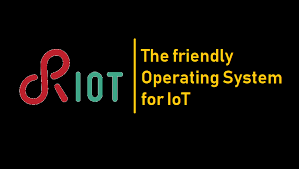
RIOT was initially developed by Freie Universität Berlin (FU Berlin), INRIA (French National Institute for Research in Computer Science and Automation), and Hamburg University of Applied Sciences (HAW Hamburg). RIOT is based on a microkernel architecture, and its kernel is essentially inherited from FireKernel, which was originally developed for sensor networks.
Unlike other low-memory systems (such as TinyOS and Contiki), RIOT allows applications to be written in C and C++, and provides complete multithreading and real-time response solutions. This makes RIOT a “user-friendly IoT operating system” that supports many low-power IoT devices and various microcontroller architectures.
Its friendliness to developers is reflected in its support for standard environments and tools, so developers do not have to undergo a steep learning curve. It supports standard programming languages such as C or C++, and has very little hardware-related code. Developers can write code once and run it on 8-bit, 16-bit, and 32-bit microcontrollers. RIOT can also run as a Linux or macOS process, allowing the use of standard debugging tools such as GNU Compiler Collection (GCC), GNU Debugger, Valgrind, Wireshark, etc. RIOT complies with part of the POSIX standard.
RIOT is also resource-friendly and IoT-friendly, with one of its key features being its ability to support lightweight devices while achieving significant energy savings. It supports multithreading with minimal thread overhead. RIOT provides various communication protocol stacks, including IPv6, 6LoWPAN, and content-centric networking. It also supports RPL, UDP, TCP, and CoAP.
Contiki
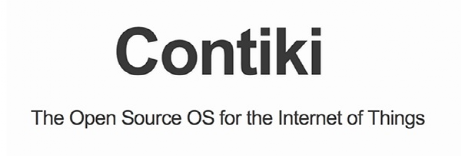
Contiki is named after the famous explorer Thor Heyerdahl’s raft, the Kon-Tiki. Its basic kernel and most core functions were developed by Adam Dunkels from the Swedish Institute of Computer Science’s network embedded systems group.
Contiki is a small, open-source, and highly portable multitasking operating system, especially suitable for memory-constrained embedded systems. From 8-bit computers to microcontrollers, Contiki requires only a few thousand bytes of code and a few hundred bytes of memory to provide a multitasking environment and built-in TCP/IP support. In a typical configuration, the Contiki system requires only 2KB of RAM and 40KB of ROM.
Contiki includes an event-driven kernel, allowing for dynamic loading of upper-layer applications at runtime. It uses a lightweight protothreads process model to provide a linear, thread-like programming style on an event-driven kernel.
Arm – Mbed OS

Mbed OS is a single-threaded IoT operating system developed collaboratively by Arm and its technology partners. The latest version has been upgraded to Mbed OS 5, which integrates the real-time operating system CMSIS-RTOS RTX kernel, enabling Mbed OS to support deterministic, multi-threaded real-time programs, such as low-latency industrial automation control and vehicle networking.
Mbed OS 5 can run on all Cortex-M series products and has good extensibility. For applications that do not require high processing performance, only the core functions of Mbed OS 5 can be retained, allowing it to run on Cortex-M0 chips with only 8K of memory.
Applications targeting the Mbed platform can be developed using the Mbed online IDE, a free online code editor and compiler. Developers only need to install a web browser on their local PC, as their projects are compiled in the cloud, meaning the ARMCC C/C++ compiler is used on a remote server. The Mbed IDE provides a private workspace and can import, export, and share code through distributed Mercurial version control, and it can also be used for code documentation generation. Applications can also be developed using other development environments, such as Keil µVision, IAR Embedded Workbench, and Eclipse with GCC Arm embedded tools.
Keil – RTX
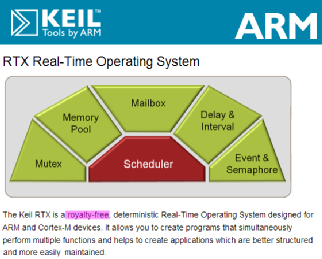
The RTX operating system is an embedded real-time operating system developed and maintained by KEIL (now part of Arm), written using standard C structure and compiled with the RealView compiler, suitable for Arm Cortex-M devices. It is not just a real-time kernel; it also has rich middleware components, is free, and the code is open.
The main functions of RTX include starting and stopping tasks (processes), as well as supporting inter-process communication, such as task synchronization, management of shared resources (peripherals or memory), and message passing between tasks. Developers can use basic functions to start the real-time runner, initiate and terminate tasks, and pass control between tasks (round-robin scheduling). Developers can assign priorities to tasks.
Its features include time-slicing, preemptive and cooperative scheduling, unlimited task quantity, each task having 254 priority levels, and unlimited semaphores, mutexes, message mailboxes, and soft timers. It supports multi-threading and thread-safe operations. Using the MDK dialog-based configuration wizard, MDK configuration can be easily completed.
University of California, Berkeley – TinyOS
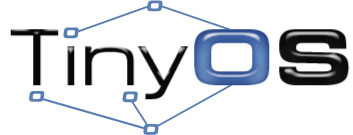
TinyOS was initially developed as a collaborative project by UC Berkeley and Intel Research for embedding intelligent micro-dust, and later evolved into an international collaboration project, the TinyOS Alliance. TinyOS is written in nesC language, an open-source operating system based on a component-based architecture, allowing for rapid realization of various applications.
The original purpose of TinyOS was to create an operating system dedicated to embedded wireless sensor networks (WSN). However, due to its good scalability and sufficiently small code size, TinyOS also holds a very important position in the field of IoT applications.
TinyOS has a very active user community, with users spanning academia and industry. The fact that TinyOS has been downloaded over 35,000 times in a year illustrates its popularity. TinyOS is very effectively used in various scenarios, such as sensor networks, smart buildings, smart meters, etc.
Amazon – FreeRTOS

FreeRTOS is a mini real-time operating system kernel designed by Richard Barry in 2003. As a lightweight operating system, the entire core code consists of only 3 to 4 C files. To make the code easy to read, port, and maintain, most of the code is written in C, with only a few functions (mostly architecture-specific scheduling subroutines) written in assembly language.
Its features include user-configurable kernel functions, multi-platform support, small target code, simple and powerful execution tracking capabilities, stack overflow detection, unlimited task numbers and priorities, multiple tasks can be assigned the same priority, queues, binary semaphores, counting semaphores, and recursive communication and synchronization tasks, priority inheritance.
FreeRTOS provides many methods to achieve multi-threading, multitasking, mutexes, semaphores, and software timers, including a tick-less mode designed for low-power applications, and priority management for threads is also supported. The main functions include task management, time management, semaphores, message queues, memory management, logging functions, software timers, co-routines, etc., which can basically meet the needs of smaller systems.
This operating system is widely used by many manufacturers on lightweight CPUs due to its simplicity and ease of use, and has been successfully ported to 35 different microcontrollers. FreeRTOS is licensed under the MIT license.
Microsoft – Windows 10 IoT
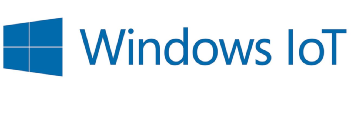
Windows IoT, formerly known as Windows Embedded, is part of Microsoft’s embedded product family. When Microsoft began releasing Windows 10 embedded versions, “Windows Embedded” was renamed to “Windows IoT”. This system targets various IoT devices, from small industrial gateways to larger and more complex devices (such as controlling medical devices, ATMs), suitable for automation manufacturing, retail, medical, military, financial, aerospace, and other embedded devices.
Currently, it includes four major series: Windows Embedded Standard, Windows Embedded Compact, Windows Embedded Enterprise, and Windows Embedded POSReady.
In May 2020, Microsoft announced that it would merge the Windows 10 IoT Core and Windows 10 IoT Enterprise versions into one, with the first version expected to be released in 2021, while also promising that the new version would be more streamlined and will add features like executing Linux containers.
Google – Fuchsia
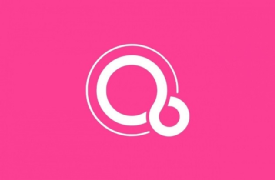
In 2016, it was revealed that Google was developing an IoT OS named “Fuchsia” based on the microkernel Zircon. It is speculated that Fuchsia is Google’s attempt to unify the entire ecosystem with a single operating system, meaning that one operating system can run on devices including smartwatches, smart speakers, laptops, smartphones, etc.
Unlike Chrome OS and Android, which are based on the Linux kernel, Fuchsia is based on a new microkernel called Zircon, inspired by Little Kernel, for embedded systems, primarily written in C and C++.
The user interface and applications of Fuchsia are developed using “Flutter”, benefiting from Flutter’s cross-platform capabilities, allowing users to install some Fuchsia applications on Android devices.
The logo of Fuchsia is a pink infinity symbol. As a free and open-source software distribution, it is licensed under the three-clause BSD, MIT, and Apache 2.0 software licenses.
The Linux Foundation – Zephyr
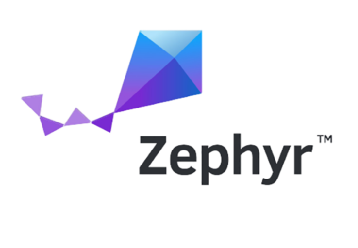
Zephyr was initially launched by Wind River Systems in November 2015 as the “Rocket kernel” for IoT devices, earlier known as “Microkernel Profile for VxWorks”, and the code was ported from Virtuoso DSP RTOS acquired from Eonic Systems in 2001. In February 2016, it became a project of the Linux Foundation and was renamed to its current name.
Zephyr is a small real-time operating system that supports multiple architectures and is optimized for resource-constrained environments. It is suitable for everything from simple embedded environmental sensors and LED wearable devices to complex smartwatches and IoT wireless gateways. The main features of Zephyr are listed below:
-
Supports over 150 boards.
-
Complete flexibility and choice.
-
Can handle small IoT devices.
-
Can develop products with built-in security features.
In the design of Zephyr, security is also important, with dedicated mechanisms to maintain or improve security.
Micrium – μC/OS-II

μC/OS is provided by Micrium, is a portable, embeddable, customizable, preemptive multitasking open-source real-time kernel designed for embedded applications, suitable for 8-bit, 16-bit, and 32-bit microcontrollers or digital signal processors (DSP). μC/OS-II has undergone significant improvements and upgrades based on the original version μC/OS, and it has now been upgraded to μC/OS-III. The source code is open, clean, consistent, and well-documented, suitable for system development, with nearly a decade of practical use and many successful applications of this real-time kernel.
The main features of μC/OS-II are as follows:
1) Open-source code, making it easy to port the operating system to various hardware platforms;
Portability, as most of the source code is written in C, facilitating porting to other microprocessors;
2) Embeddable;
3) Customizable, allowing selective use of required system services to reduce the required storage space;
4) Preemptive, it is a fully preemptive real-time kernel, which always runs the highest priority task under ready conditions;
5) Multitasking, capable of managing 64 tasks, with different priorities for tasks; it does not support time-slice round-robin scheduling;
6) Deterministic, the execution time of function calls and services is deterministic and does not depend on the number of tasks;
7) Practicality and reliability, successful applications of this real-time kernel are the best evidence of its practicality and reliability.
Strictly speaking, μC/OS is only a real-time operating system kernel; it only includes basic functions such as task scheduling, task management, time management, memory management, and inter-task communication and synchronization. It does not provide additional services such as input/output management, file systems, and networks. However, due to the good scalability of uC/OS and its open-source nature, these non-essential functions can be implemented by users as needed.
Embedded Linux
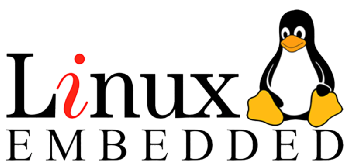
Embedded Linux is a collective term for a type of embedded operating systems, all of which are based on the Linux kernel and designed to be used in embedded devices. Due to its open-source nature, people can modify it freely to meet their applications, and debugging is also very easy. Following the GPL, there is no need to pay license fees for each application. There is a large amount of application software available, most of which also follow the GPL, being open-source and free, which can be slightly modified for use in users’ systems.
In addition, there are many excellent free development tools, all following the GPL and being open-source. There is a large community of developers, and there is no need for specialized talent; as long as one understands Unix/Linux and C language, they can participate. With the popularity of Linux in China, such talent is increasing. Therefore, the cost of software development and maintenance is very low. In addition, the stable network functionality is a significant advantage that Linux itself possesses. The kernel is lean, requiring little resources to run; a typical embedded Linux installation requires about 2MB of system memory.
There is no essential difference between embedded Linux and ordinary Linux; almost all hardware used in PCs is supported by embedded Linux. Moreover, the source code for drivers for various hardware can be obtained, making it very convenient for users to write their own proprietary hardware drivers in embedded systems.
A disadvantage of running Linux on a system is that providing real-time performance requires adding real-time software modules. These modules run in the kernel space, which is where the operating system implements scheduling policies, hardware interrupt exceptions, and executes programs. Since these real-time software modules run in kernel space, code errors may corrupt the operating system, affecting the reliability of the entire system, which is a significant weakness for real-time applications.
RIM – QNX
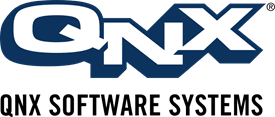
QNX primarily targets the embedded systems market. Although it does not belong to UNIX, it supports POSIX, allowing most traditional UNIX programs to compile and execute on QNX with minor modifications (or even no modifications), making it a commercial Unix real-time operating system. This product was developed in the early 1980s and later renamed to QNX Software Systems, which has been acquired by Research In Motion (RIM, the manufacturer of BlackBerry phones).
QNX is one of the most successful microkernel operating systems, with most functions executed by many small tasks known as servers. This architecture allows users and developers to turn off unnecessary features without altering the operating system itself.
QNX Neutrino (2001) features a microkernel real-time platform that is real-time, stable, reliable, and fast, and has been ported to many platforms, running on various modern processors used in the embedded market, such as X86, PowerPC, etc. QNX has been widely used in the automotive field, such as in the music and media control systems of Porsche sports cars and the control systems of the US Army’s unmanned Crusher tank, as well as in RIM’s BlackBerry PlayBook tablet.
Nucleus
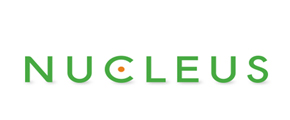
Nucleus Real-Time Operating System (Nucleus RTOS) is an embedded operating system launched by Mentor Graphics (now Siemens EDA) under Accelerated Technology. The advantage of Nucleus is that programmers do not need to write board support package (BSP) software, and about 95% of the code is written in ANSI C, making it very easy to port and capable of supporting most types of processors, while providing support for networking, graphical user interfaces, file systems, etc.
In a typical target environment, the Nucleus PLUS core code area generally does not exceed 20K bytes in size. From an implementation perspective, Nucleus PLUS is a set of C function libraries, and application code is linked with the core function library to generate target code that can be downloaded to the target board’s RAM or directly burned into the target board’s ROM for execution. Due to the use of a software component approach, the various components of Nucleus PLUS are very easy to replace and reuse. The components of Nucleus PLUS include task control, memory management, inter-task communication, task synchronization and mutual exclusion, interrupt management, timers, and I/O drivers.
Nucleus RTOS provides well-commented C source code to every user.
Microsoft – ThreadX

ThreadX is a real-time operating system developed by Express Logic (acquired by Microsoft in 2019). The author of ThreadX is Willian Lamie, who was also the author of Nucleus and served as the CEO of Express Logic.
The name ThreadX comes from two aspects: the thread (Thread) is the executable unit of the operating system, and “X” indicates context switching. Threads in ThreadX share the same memory space, and resources can be shared.
Similar to many other real-time operating systems, ThreadX is a multitasking system that adopts preemptive scheduling, fast interrupt response, independent memory management, and supports thread-to-thread communication, mutual exclusion, events, and thread synchronization.
The main features of ThreadX include support for priority inheritance, design of preemption thresholds, microkernel design, and small code space usage. ThreadX source code is licensed under a royalty-free usage model.
ThreadX is typically applied in embedded operating systems. Most of the development work is completed on a host system running Windows or Linux, and a cross-compiler can generate machine code for the target system on the host, which is then downloaded to the target board for execution.
Several development tools that can recognize ThreadX systems (OS-aware) include Wind River Workbench, ARM RealView, GreenHills Software’s MULTI, Metrowerks CodeWarrior, IAR C-SPY, Lauterbach TRACE32, and visionCLICK.
ThreadX supports architectures including ARM, X86, ARC, MIPS, Xtensa, etc., covering almost all mainstream CPU architectures.
Domestic
Huawei – LiteOS
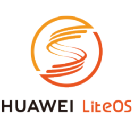
In 2015, Huawei LiteOS was released, and in September 2016, an open-source version was launched. The kernel source code is open and only 10K in size, making it a lightweight IoT operating system launched by Huawei, and an important part of Huawei’s IoT strategy. It possesses key capabilities such as lightweight, low power consumption, interoperability, rich components, and rapid development, building a domain-specific technology stack tailored to the business characteristics of the IoT field, providing developers with a “one-stop” complete software platform, effectively lowering development thresholds and shortening development cycles, applicable to wearable devices, smart homes, vehicle networking, LPWA, and other fields.
Key features include a low-power framework, OpenCPU architecture, security design, end-cloud interoperability components, and SOTA remote upgrades.
Huawei – HarmonyOS (including LiteOS kernel)
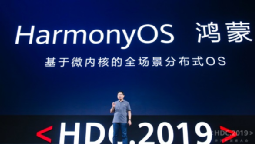
Huawei HarmonyOS is a distributed operating system aimed at all scenarios (mobile office, sports health, social communication, media entertainment, etc.). Based on the capabilities of traditional single-device systems, HarmonyOS proposes a distributed concept that adapts to various terminal forms based on the same set of system capabilities, supporting multiple terminal devices. The main features of HarmonyOS include distribution, including soft bus, device virtualization, data management, and task scheduling. It also features one-time development and multi-end deployment; unified OS and elastic deployment.
HarmonyOS has three types of kernels: Linux, HarmonyOS kernel, and LiteOS, with LiteOS being the default. It can be inferred from the HarmonyOS kernel files that LiteOS has certain inheritances. The multi-kernel design allows for selection of the appropriate kernel when supporting different resource-constrained devices. On another note, the LiteOS kernel is not limited to HarmonyOS, as it supports more hardware than HarmonyOS, providing more kernel cases and porting strategies. From the code perspective, both support Cortex-M and Cortex-A kernels.
——— Little Question: What is the difference between LiteOS and Harmony? ———
The two differ in their consumption of memory and resources due to their different product positioning.
Huawei LiteOS can be trimmed down to 6KB ROM and consume 2KB RAM resources, making it very low in resource consumption, while HarmonyOS requires 128K ROM and 2MB RAM to ensure system performance.
Therefore, Huawei LiteOS is targeted more towards the IoT business field and is better suited for low-configuration, low-cost, low-power application scenarios; HarmonyOS is more suitable for multimedia interaction, requiring JS to increase development efficiency for complex large applications. Currently, HarmonyOS development boards mainly support Huawei’s self-developed chips, while Huawei LiteOS supports mainstream Arm development and learning boards in the market.
Alibaba – AliOS Things

Alibaba’s OS originated from the mobile operating system YunOS, which has been around for nearly 10 years, later integrated and upgraded to AliOS. Among them, AliOS Things is a highly customizable, lightweight embedded operating system specifically targeting the IoT field, aimed at building an integrated cloud-based IoT infrastructure. It possesses extreme performance, minimalist development, cloud integration, rich components, and security protection capabilities, and supports terminal devices connecting to Alibaba Cloud Link, widely applicable in smart homes, smart cities, and new transportation fields.
In October 2017, AliOS Things was officially open-sourced.
AliOS Things adopts a microkernel architecture, allowing software running on smart hardware to be containerized and upgraded online, meaning that software and hardware can be decoupled and maintained quickly, reducing production and maintenance costs for hardware manufacturers. According to Alibaba’s official introduction, this is an operating system specifically for AIoT smart devices, featuring a new development model, online trimming tools, application and kernel separation, script language support, and local AI framework.
Moreover, AliOS Things is also the core of the Pingtouge YoC software platform.
Seiko – RT-Thread

RT-Thread was released in 2006 and is a technology platform that integrates RTOS kernel, middleware components, and developer community, developed by Mr. Xiong Puxiang and the open-source community. RT-Thread is also a complete, rich component, highly scalable, easy to develop, ultra-low power consumption, and high-security IoT operating system. RT-Thread has all the key components required for an IoT operating system platform, such as GUI, network protocol stack, secure transmission, low-power components, etc.
According to official information, RT-Thread currently has the largest embedded open-source community in China and is widely used in various industries such as energy, automotive, medical, consumer electronics, etc., with an accumulated installation volume of over 800 million units, becoming the most mature and stable open-source RTOS developed independently by Chinese people.
RT-Thread has a good software ecosystem, supporting all mainstream compilation tools on the market such as GCC, Keil, IAR, etc. The toolchain is complete and friendly, supporting various standard interfaces such as POSIX, CMSIS, C++ application environment, Javascript execution environment, etc., making it convenient for developers to port various applications. Commercial support covers all mainstream MCU architectures such as ARM Cortex-M/R/A, MIPS, X86, Xtensa, C-Sky, RISC-V, almost supporting all mainstream MCUs and Wi-Fi chips on the market.
China Mobile IoT – OneOS

OneOS is a lightweight operating system launched by China Mobile for the IoT field, with top-level design starting in 2018 and officially releasing the open-source version in June 2020. This system features customizability, cross-platform compatibility, low power consumption, and high security, supporting mainstream CPU architectures such as Arm Cortex-M/R/A, MIPS, RISC-V, and is compatible with standards such as POSIX and CMSIS, supporting Micropython language development, providing graphical development tools to effectively improve development efficiency and reduce development costs, helping customers develop stable, reliable, and easy-to-use IoT applications.
OneOS follows the Apache License 2.0, allowing individual and corporate customers to use it in commercial products for free without needing to disclose source code, with no potential commercial risks. China Mobile IoT has stated that it will adhere to an open and cooperative attitude, providing stable systems suitable for various IoT scenarios for free.
Tencent – TencentOS tiny

TencentOS tiny is a real-time operating system developed by Tencent for the IoT field, featuring low power consumption, low resource usage, modularity, and security, effectively enhancing the development efficiency of IoT terminal products.
TencentOS tiny claims to be the industry’s smallest, at only 1.8K, providing a streamlined RTOS kernel, with kernel components that can be trimmed and configured, allowing for rapid porting to various mainstream MCU and module chips. Based on the RTOS kernel, it provides a wealth of IoT components, integrating mainstream IoT protocol stacks (such as CoAP/MQTT/TLS/DTLS/LoRaWAN/NB-IoT, etc.), facilitating the rapid connection of IoT terminal devices and services to the Tencent Cloud IoT platform.
Interestingly, shortly after this operating system was launched, Tencent announced that TencentOS would cease operations on June 28, 2017. The explanation given was that “due to the shrinking of the third-party ROM market, TencentOS would exit the historical stage.”
However, in light of the prospects of the IoT market, in September 2019, Tencent announced the open-sourcing of TencentOS tiny, hoping to further promote the prosperity of its IoT ecosystem. Currently, TencentOS tiny supports various chips and modules from mainstream manufacturers such as STMicroelectronics, NXP, Huada Semiconductor, Ruixing Hengfang, and Guomin Technology. However, compared to Huawei and Alibaba’s strong and comprehensive ecosystem layout, Tencent still has a long way to go.
Qingke – MiCO
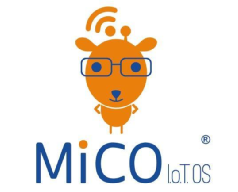
In July 2014, Shanghai Qingke (Mxchip) launched MiCO (Micro-controller based Internet Connectivity Operating System) in collaboration with Alibaba Cloud, which is a highly portable operating system and middleware development platform optimized for smart hardware running on microcontrollers. At that time, Qingke claimed that this was the first truly IoT operating system in China.
As an independent system, MiCO has an open architecture and does not rely on specific MCU models while featuring a hardware abstraction layer (HAL). Additionally, the firmware application open interface has achieved various application layer protocols: Haier, Midea, AO, Apple MFi, HomeKit, Siri voice control, etc. MiCO includes modules for underlying chip drivers, wireless network protocols, radio frequency control technology, security, application frameworks, etc.
MiCO contains a real-time operating system kernel aimed at IoT devices, suitable for running on resource-constrained microcontroller devices. Additionally, MiCO includes a network communication protocol stack, security algorithms and protocols, hardware abstraction layer, programming tools, and other essential software functionality for developing IoT applications. MiCO provides abstraction for MCU platforms, allowing application development based on MiCO without worrying about the implementation of specific MCU functions, enabling rapid construction of software in IoT devices using various programming components provided by MiCO.
Yihui – SylixOS

SylixOS is a large embedded hard real-time operating system independently designed and developed by Yihui Information, with development work starting in 2006. According to the evaluation report from the Ministry of Industry and Information Technology, the kernel autonomy rate is 100%. It supports symmetric multiprocessor (SMP) platforms and has rich file systems, network systems, and numerous device driver supports, providing a complete integrated development environment. Its application fields mainly include network devices, national defense security, industrial automation, rail transportation, power, medical, aerospace, automotive electronics, etc.
Globally, SylixOS, as a latecomer in real-time operating systems, has drawn on the design ideas of many real-time operating systems, including RTEMS, VxWorks, ThreadX, etc. Its birth can eliminate the dependence of some key domestic devices on foreign embedded operating systems, providing a new choice for the domestic embedded information technology industry.
To ensure that SylixOS can continue to develop and attract a large number of developers to participate in testing, SylixOS currently exists as an open-source project. According to its official website, the operating system source code has been authorized to several domestic research institutions, including China Aerospace Science and Industry Corporation, China Aerospace Technology Group, Loongson Zhongke, National University of Defense Technology, etc., launching various distribution versions such as SylixOS Haiying Yihui, Fengyun Yihui, Longxin Yihui, and Qilin Yihui.
———————— I am the dividing line ——————
Currently, the IoT operating system market in China is blooming, in addition to the above-mentioned ones, there are also Oasis OS from New H3C, UHomeOS from Haier, Deltaos (Dao System) from Keyin Jingcheng, DJYOS from Qin Jian Computer, AworksOS from Zhiyuan Electronics, AcoreOS (Tianmai) from AVIC Computing Institute, and HopenOS from Kaishihai Peng, etc. However, overall, the global IoT market is still dominated by foreign operating systems, especially those American companies that entered the market earlier, such as ThreadX, FreeRTOS, VxWorks, etc.
Conclusion
Currently, in the IoT operating system market, aside from some products from established foreign manufacturers, the remaining dozens of systems are still in the early stages of development, and there is no environment of monopoly by one or several OS in the industry chain. For internet giants with ecosystems and ample funds, many still prefer to use their self-developed customized OS, which to some extent has led to a proliferation of factions in the industry.
On the other hand, open-source Linux and RTOS are still mainstream in the IoT market. Besides companies with their own OS, most other manufacturers adopt third-party operating systems that have ecological advantages and are open-source and neutral, such as RT-Thread.
Operating systems cannot exist as a single product but should be an ecosystem that requires support from hardware and software developers. Windows and Android systems seized the opportunity in the PC and smartphone eras, forming monopolies that make it difficult for later entrants to overturn, and the smart industry is looking forward to the next wave of computing revolution.
According to market analysis by BCG Boston Consulting, about 80% of successful companies gain over 50% market share in the first five years, with an average time of 7 years to reach peak market share, around 80%. In contrast, the data for unsuccessful companies shows that their average market share in the first five years is 8%, with a peak of only 13%. For example, Microsoft’s Windows Phone and BlackBerry’s operating system had peak market shares of only 15%.
Today, the IoT operating system market is opening up many new opportunities, and old monopolists may not be able to maintain their dominance in the IoT era. Emerging players must seize the opportunity to rapidly scale up and gain first-mover advantages to occupy the high ground of the IoT era. If they cannot quickly expand their market share, they may be eliminated before they even qualify to compete.
In various emerging markets, overseas enterprises do not have absolute advantages, creating opportunities for domestic enterprises to develop their own operating systems. For example, domestic companies like Huawei, Xiaomi, BAT, which have extensive layouts in smart hardware and IoT, are also driving the rise of domestic IoT operating systems to some extent.
Scan the QR code below to join the IoT technology group
